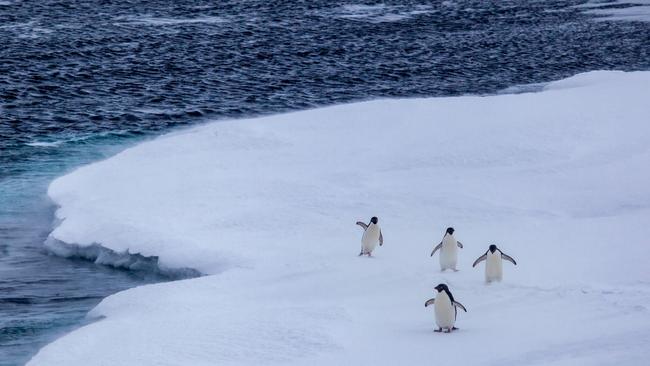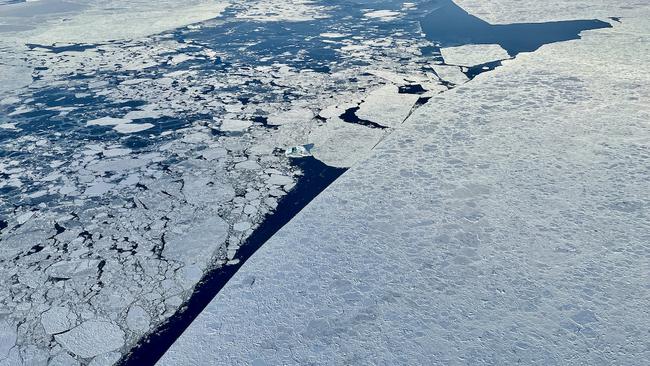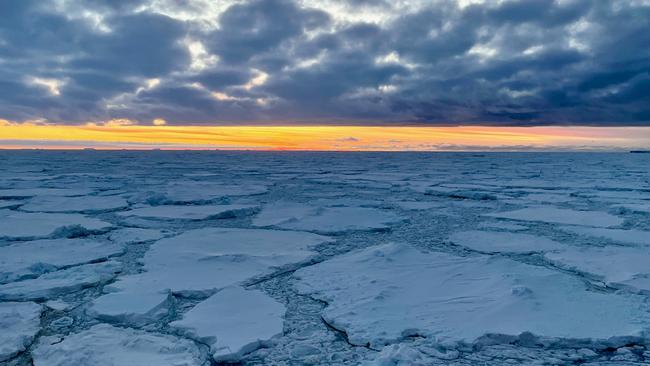Scientists record third lowest Antarctic sea-ice cover for third consecutive summer
For three years in a row, Antarctic sea-ice is alarmingly low – with Hobart-based scientists finding an abrupt change to the system. What it means.

Tasmania
Don't miss out on the headlines from Tasmania. Followed categories will be added to My News.
For the third consecutive summer, sea-ice cover around Antarctica reached nearly the lowest on record, with Hobart-based scientists finding an abrupt change to the system.
Antarctic sea ice reached the third lowest on record last week, with its summer minimum area of 1.97 million km2.
It comes as scientists from the University of Tasmania’s Australian Antarctic Program Partnership found a regime shift, which is an abrupt change to the behaviour of the system.
“Perhaps the most striking change for scientists is that while the atmosphere has always been the main driver of Antarctic sea-ice variability, the recent extreme fluctuations over the last decade can’t be explained by the atmosphere alone,” lead author Dr Will Hobbs said.
“The changes we’re seeing – how much the sea ice can shift from its average state, and how long those shifts can stick around – are controlled by ocean processes.
“This is more evidence that ocean changes are probably the secret to what’s happened in recent years.”

Bureau of Meteorology’s Dr Phil Reid, who co-authored the study, said scientists are
observing if the new freeze season would repeat an alarmingly low sea-ice cover this winter.
“This summer has set a new record for the length of Antarctic coastline exposed to damaging swells and surface ocean warming,” he said.
“We also need to monitor where and when sea ice isn’t present – particularly around the coastal margins.
“The presence of sea ice can act as a buffer between ocean swells and ice shelves.
“The removal of this buffer increases coastal exposure which can destabilise ice shelves, potentially increasing the flow of Antarctic glaciers and adding to sea level rise.”

Researchers found low sea ice is occurring across Antarctica and not just a few locations, there was a much longer sea-ice memory from season to season and variability almost doubled from summer sea-ice from 1979-2006 to 2007-2022.
“Whether or not sea-ice changes have been forced by human-caused climate change has yet to be formally proven,” Dr Hobbs said.
“But one thing is clear, the future of a frozen ocean in a warming world is increasingly uncertain.
“Continued low sea ice is bad news for unique polar ecosystems, global sea level and the planet’s climate.”
More Coverage
Originally published as Scientists record third lowest Antarctic sea-ice cover for third consecutive summer




